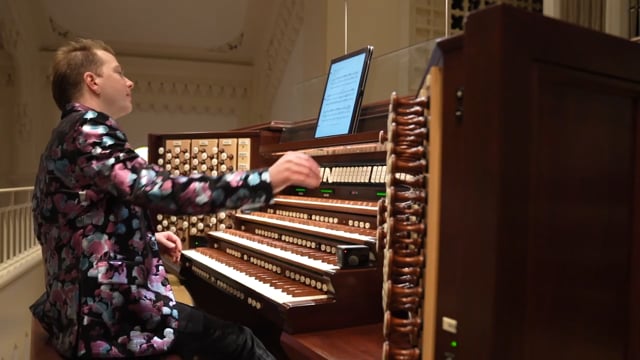
Orgues Létourneau, St-Hyacinthe, Québec, Canada, has completed their Opus 136 for Market Square Presbyterian Church, Harrisburg, Pennsylvania. The new organ reuses some of the previous Aeolian-Skinner pipe organ from 1947 (Opus 1048) and M. P. Möller’s Opus 11805 from 1991. Of the new organ’s 83 ranks, some 21 ranks came from Aeolian-Skinner’s Boston workshops and another 46 ranks were made in Hagerstown, with the final 16 ranks having been built in St-Hyacinthe. The Aeolian-Skinner and Möller electro-pneumatic windchests were restored to like-new condition in the Létourneau workshops, with new unit chests built as needed.
Though completed in late October 2021, Opus 136’s first solo concert took place on February 25, 2022, with virtuoso Ken Cowan at the console. In response to works by Widor, Litaize, and Bach—as well as transcriptions of works by Saint-Saëns and Wagner—the capacity crowd’s responses were nothing short of ecstatic. Mr. Cowan also brilliantly introduced a work commissioned for the evening, the Michelangelo Fantasy by Dr. Scott H. Eggert.
Orgues Létourneau Opus 136 is featured on the cover of the June issue of The Diapason:
https://www.thediapason.com/content/cover-feature-letourneau-opus-136
For information: www.letourneauorgans.com
Other organ builder news:







